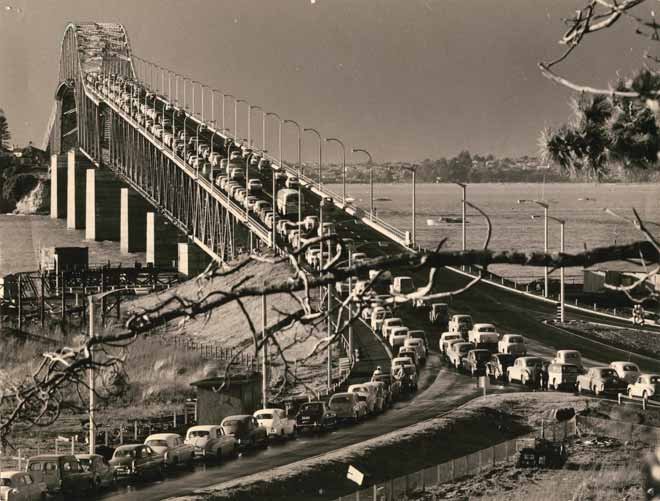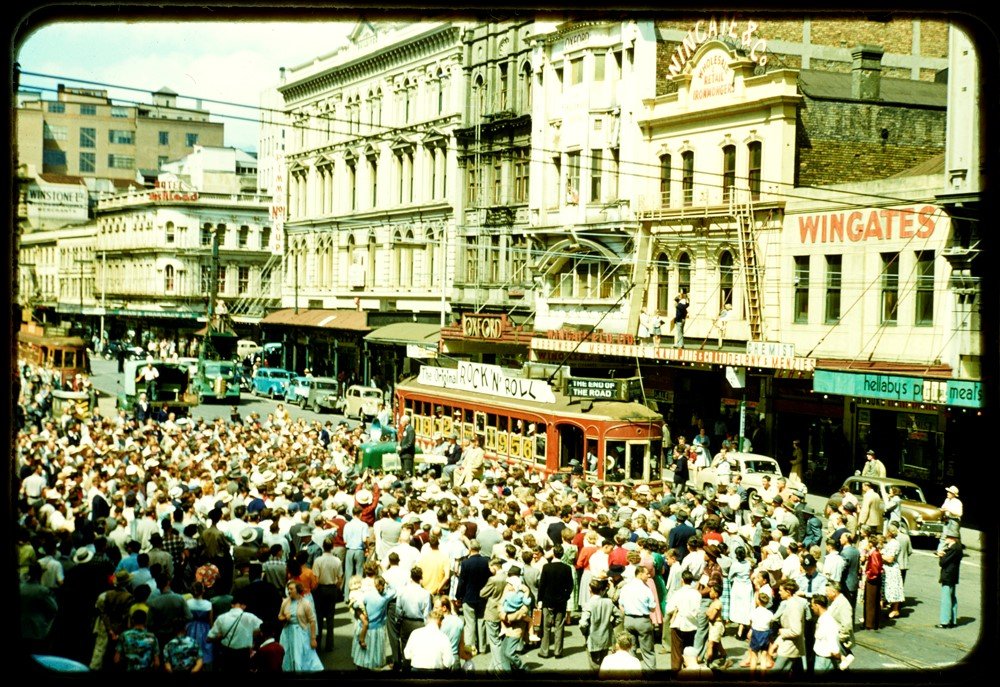NZ Rail History - War with Cars
Rush hour on the Auckland Harbour Bridge shortly after its opening in 1959. (photo courtesy Sir George Grey Special Collections, Auckland Libraries)
Trains, together with trams and ferries, played an important part in Auckland’s growth as New Zealand’s largest city. But in the 1930s and 40s the city’s well-used public transport network was under serious attack – by the car.
Car ownership in New Zealand was skyrocketing – 69,521 car registrations in 1925 had ballooned to 194,217 in 1938.
The opening of new roads like Tamaki Drive in the 1930s helped boost the popularity of the car and accelerate Auckland’s urban sprawl.
At the same time relocating the main railway station out of the central city towards Parnell hastened the rapid decline in the number of people using public transport – not even the opening of New Zealand’s first bus station, in downtown Auckland, could stop the drop.
A huge crowd packed into the bottom of Queen Street in 1956 to farewell the city’s last tram (photo courtesy Sir George Grey Special Collections, Auckland Libraries)
In the 1950s, Auckland’s last tramlines were ripped up and political decisions were made not to electrify and modernise the rail network.
Political visions for Auckland’s future were focussed elsewhere, as such Auckland City Council looked across the Pacific to cities like Los Angeles. Reinforced by a report from American-based transport experts, council set its sights firmly on expanding the city’s transport network with motorways.
Car was King and in 1959 the Auckland Harbour Bridge opened. Overnight, North Shore commuters turned their back on the ferries and poured across the bridge in their cars. Southside commuters no longer had it all their own way. There were reports of friction with drivers from the south suddenly finding their usual car parks snapped up by outsiders from the shore.
Until 1984, drivers were tolled to pay for the Auckland Harbour Bridge. (photo courtesy Sir George Grey Special Collections, Auckland Libraries)
Within 10 years the harbour bridge was chocker and “Nippon clip-ons” had to be tacked on to the sides to provide more room. With almost one car for every adult in Auckland, politicians, planners and experts had overlooked the one significant downside to their road-friendly vision – congestion.
Revolution was fermenting behind Auckland’s lengthening rush-hour traffic jams. Rail was down, but it wasn’t out!



